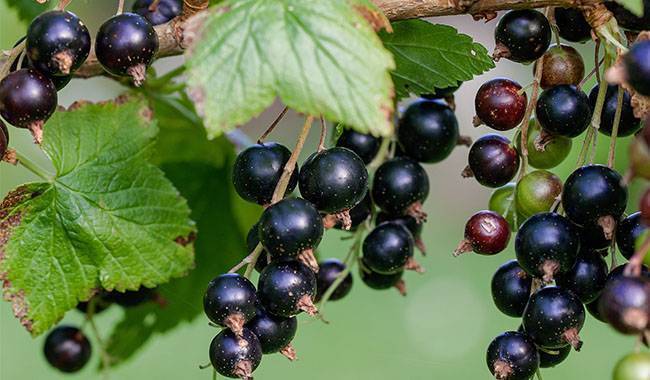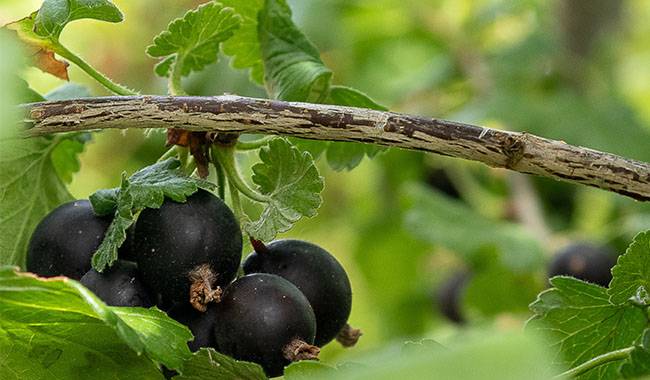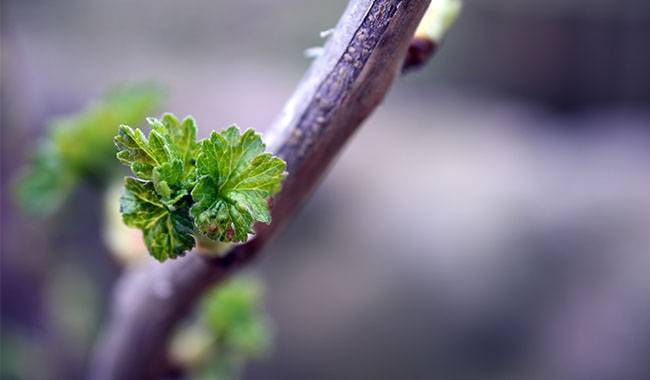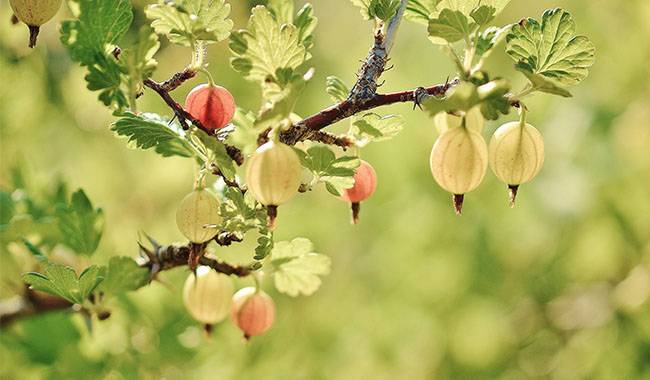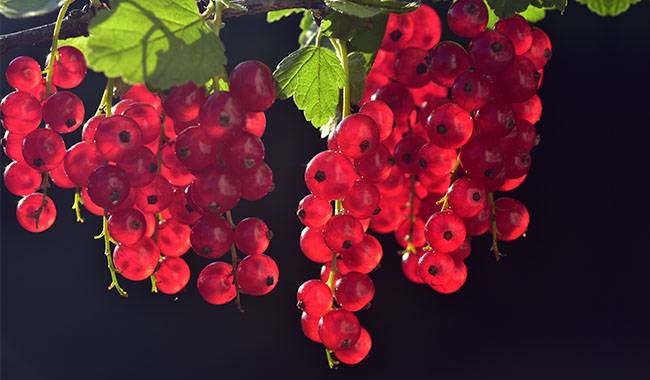
In order to get a good harvest of currants (of different colors), it is necessary to know how to properly care for this crop, what should be done in which month.
By the way, this culture requires attention almost all year round – work begins in March and ends in December, that is, the true connoisseur of currants, the loving owner has only two months of rest – it is January and February.
Let’s talk about what must be done with currant plant care during the designated calendar period.
CURRANT PLANT CARE IN MARCH
Pruning
In March, pruning of currant plants is usually carried out. Choose a day when the temperature is at least 23°F (-5°C) below freezing.
At this time of year, be sure to cut all dry shoots, sick shoots broken by snow or wind, and all shoots growing deep in the canopy (they will definitely cause the canopy to thicken) to the tree ring.
All shoots should be removed from the plot and burned to avoid contaminating the soil.
Treatment for fungal infections
After pruning the plants, it is advisable to treat them with copper sulfate in order to prevent the development of fungal infections. For this purpose, dilute 100 g in a bucket of water and moisten the current blocks on the ground well.
Fertilization
Before the snow completely melts, you can apply nitrogen fertilizer. It is best to use urea: 15 grams of urea should be spread evenly under each current tree, loosening the soil beforehand.
Rooting cuttings
Near the middle of March, you can cut the shoots of currants for later propagation and cut them into 6inch (15cm) long plugs.
You can bury the plugs in the snow or store them in a cellar or other room at a temperature of about 32°F (0°C) to prevent the buds from unfolding before planting.
Remove buds that have been infested with bud mites
At the end of March, you should check the plants more carefully, especially the buds on top. If you notice that some buds are unnaturally large, round, and swollen, then it is highly likely that they are infested with bud mites.
Such current buds should be broken off (pulled) and destroyed. If these buds are in the majority, the bush can be cut off completely, leaving only a small part of the shoots with a few buds, or the whole bush can be cut off.
Remove shoots affected by powdery mildew
If you notice a grayish-white spot on the top of a shoot, it is starting to develop powdery mildew, which will later move to the leaves and berries. Current shoots that show signs of powdery mildew should also be pruned and burned.
Pruning young plants planted in autumn
During the last days of March, you can prune shrubs that were planted in the fall and which were not pruned in the fall. In order to make the young plants viable, they should be cut short, leaving part of the shoots with two pairs of healthy and well-developed buds.
Final inspection of currant plants
Check the plants again – ideally, each plant over three years old should have about half a dozen well-developed shoots and no more; if more, remove the excess shoots, giving preference to the youngest ones.
CURRANT PLANT CARE IN APRIL
Aphid control
In April, the beginning of the growing season is usually reflected by the opening of the current buds. Sometime later, aphids and other pests are ready to attack.
In order to prevent aphids from damaging the buds and young leaves that have started to bloom, tobacco powder mixed with an equal part of wood ash should be sprayed on the bushes.
It is best to sprinkle water on the plants beforehand. If the annual aphid population is high, you can add some caustic lime to the composition.
Soil treatment for current plantations
In April, it’s time to start tilling the soil under the currants. You can start by loosening the soil and removing any soil crusts.
The soil should be loosened to a depth of 2-3.5inch (7-9cm) 20inch (50cm) from the center of the bush and 1-2inch (3-5cm) directly below the bush.
Fertilize the currants
In mid-April, you can apply fertilizer of phosphorus and potassium. For phosphate, currants respond well to calcium superphosphate and for potash, currants respond well to potassium sulfate.
Both fertilizers should be made 15 grams under one plant. It is recommended to first loosen the soil, then – spread the fertilizer, and then lightly cover the soil with hummus.
Once the plants start to develop actively, you can again enrich the soil with urea – 10 grams per current tree. If the soil is dry enough at this point, it should be loosened and moistened beforehand, and after applying urea, covered with humus.
Planting currant plants
This month is also good for planting currant plants. It is best to put it in place in time before the buds on the young plants open.
Planting hardwood currant cuttings
In April, you can also start planting previously harvested hardwood currant cuttings. It is best to plant them in a bed with loose, good soil, free of weeds, with a bucket of humus and 12 grams of nitrocellulose per 1 square meter.
Black currant cuttings are planted diagonally, at an angle of 45 degrees, in the direction of north, and black currant cuttings are planted without slope. The cuttings are dipped into the soil so that a few healthy buds appear on the surface, and then the cuttings are pressed down with soil so that no gaps are formed between the cuttings and the soil.
The planting plan for current cuttings is 8inch (20 cm) between rows and 4inch (10 cm) between cuttings.
After planting, the soil should be moistened with a bucket of water for every 1 square meter.
Inspection of plugs planted in autumn
Those current plugs planted in autumn (which is also acceptable) should be inspected. It happens that the plugs protrude from the soil, then they have to be buried in the soil and also pinched to the ground by hand.
Rooting of cuttings
In April, if you plan to propagate currants by vertical or horizontal transplanting, you can prepare plants or lay shoots. For vertical propagation, you should bury the plants up to one-third of their height in loose, nutrient-rich soil.
Plants intended to be propagated by horizontal transplanting do not need to be topped yet – the shoots should be placed in loose and nutritious soil, nailed down with metal or wooden staples, and left as such.
CURRANT PLANT CARE IN MAY
The work in May boils down to caring for currant bushes. If you notice shoots, on which hairy inflorescences are formed, then such shoots should be cut off and destroyed.
When such shoots are in the majority, the bush should be uprooted and destroyed, and currants should not be planted in their place for five years. Reversal is a dangerous viral disease and it is pointless to fight it.
Soil loosening
During the month of May, three times loosening currants, four times weeding, and five times watering, these activities are distributed equally during the month. It is also possible to make nitrocellulose in the amount of one teaspoon under each bush.
Pruning of shoots for asexual propagation of currants
The shoots that we spread on the surface of the soil in April should have formed vertical growth and they should be covered with soil to half their height.
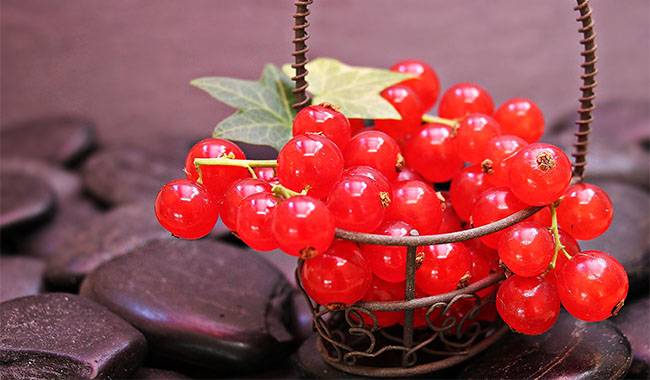
CURRANT PLANT CARE IN JUNE
Fertilize currants
In June, currants are actively growing. If for some reason you have not applied nitrogen fertilizer in the last few months, you can apply it in June by applying a teaspoon of urea under each bush, but if you do, you can refuse to fertilize in June.
Loosen the soil and water the currants
In June, it is necessary to loosen the soil 4 times, water 5 times, and weed 6 times. The volume of water poured out is one bucket under each bush.
Control of pests and diseases of currants
When diseases appear, it is necessary to control them by applying fungicides, and when pests appear, it is necessary to use insecticides and acaricides.
Rooting of green currant cuttings
In the first decade of June, you can start cutting green currant cuttings and plant them in the greenhouse for propagation. Propagation with green plugs is healthier than propagation with wooden plugs, but in this case, the financial and material costs are significantly higher.
In addition to cutting the shoots of currants and dividing them into plugs, it is necessary to prepare a greenhouse, cover it with a film and prepare a mixture consisting of nutrient soil, humus, and river sand in equal proportions.
On top of this layer should be poured a layer of river sand of about 2inch (6 cm), and the first layer (at the base) is laid a drainage layer, which can be used as expanded clay.
Currant plugs 4-5.5inch (12-14 cm) long with a pair of leaves on them should be planted under a scheme of 2.5×2.5inch (7×7 cm), deepening them to 1-2inch (3-4 cm).
They will form a mature root system in early September under conditions of 6 waterings per day in hot weather and 5 waterings per day in cold and cloudy weather.
Installation of ring bushing supports on currants
At the end of the month, it is necessary to install ring bush supports under the bushes so that they do not collapse under the weight of the harvest.
Fertilize the currants
In the meantime, when the berries have started to get a little color, it is advisable to feed the plants with micro-fertilizers needed for the full development of the berries: make 1.5 grams of copper sulfate, 2 grams of boric acid, 6 grams of manganese sulfate, 2.5 grams of zinc sulfate and 2.5 grams of ammonium molybdenum, dissolve these fertilizers in water (10 liters) and moisten well the above-ground part of the plants.
Control of current powdery mildew
If the berries, shoots, and leaves of currants are significantly affected by powdery mildew, you can still treat them with Bordeaux mixture (1%). This should be the final treatment before harvest.
CURRANT PLANT CARE IN JULY
Harvesting currants
Harvesting begins in July, around the beginning of the first decade. Currants should be harvested when they are fully colored and have acquired the typical color of the variety.
The berries are best collected in medium-sized boxes that can hold a 10 kg crop.
Watering currants
This month also continues the preparation for the next year’s harvest, so after the first harvest, the bushes should be watered with 10 liters of water per plant flower.
Preventive treatment of currants
After harvesting the entire crop, it is necessary to treat the plants with fungicides, and after five days – with insecticides and acaricides.
CURRANT PLANT CARE IN AUGUST
Fertilization of currants
At the beginning of the month, currant bushes should be fertilized with phosphorus and potassium, applying 10 grams of calcium superphosphate and 12 grams of potassium sulfate under each bush.
Loosening the soil and watering the currants
You should continue loosening the soil (2-3 loosening sessions), watering the plants (one bucket of water under each bush 5 times during August), and removing weeds (a few thorough weeding sessions during August will be enough).
Pruning shoots
In August, you can prune the currant bushes with vertical branches and again prune the vertical branches growing from the scattered horizontal branches, also halving their length. This should be done at the beginning of each month.
CURRANT PLANT CARE IN SEPTEMBER
Prepare the soil for planting currants
In September, you can prepare the soil for planting currants in autumn: cuttings from single trees and cuttings with roots dug out from the greenhouse.
Separated branches
At the end of the month, both vertical and horizontal branches should be separated from the mother plant and planted on the plot.
Fertilization of currants
At the end of the month, if fertilization was not done in August, the currant bushes can be fertilized with phosphorus and potassium fertilizers of the above concentrations.
CURRANT PLANT CARE IN OCTOBER
Planting currants
You can continue planting currants, plugs, and branches into permanent places or into seedbeds.
Pick and remove fallen leaves
The thin leaves that have fallen are best collected and burned. During the month of October, several waterings and the same amount of loosening of the soil can be done.
CURRANT PLANT CARE IN NOVEMBER
Harvesting crop residues
During this time, it is necessary to continue removing plant residues and burning them.
Prune broken shoots
Check that the plants are acceptable and if you find broken shoots, remove them.
CURRANT PLANT CARE IN DECEMBER
Apply extra snow cover to current plants
It is better to sprinkle the plants with snow so that they have no problems in winter.
Dear readers
The terms listed in this material should be considered as approximations and may vary slightly, depending on the weather conditions and the variety of currants.




